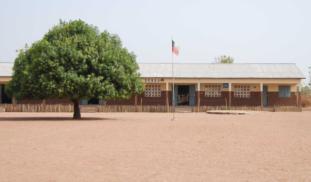Please wait...
About This Project
An increasing number of African democracies are providing free primary education. But when it comes to secondary education, completion rates drop off dramatically. This project develops a mobile money system to pay secondary school fees in rural Benin. It lowers transaction costs, saves relatives time & money, and offers schools a fundraising tool to cover the poorest students' needs. As a result, more kids can afford to attend secondary school.

Browse Other Projects on Experiment
Related Projects
How Useful Could a Tiny New Microcontroller be for Small Spacecraft?
Our team is testing the TinyDuino, which is a new, small, stackable microcontroller with low power consumption...
An Archaeological Excavation of a Roman Bath Complex
Water, water every where, nor any drop to bathe in. The Roman town of Cosa on the western coast of Italy...
Transition from Formula to Baja
Bobcat Motorsports is a dedicated and enthusiastic team of students from Montana State University competing...


